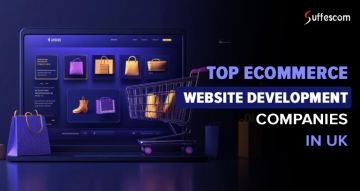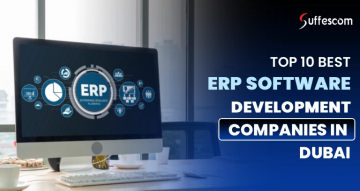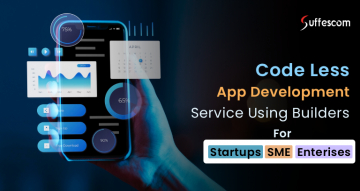AI Fall Detection in Hospitals & Elderly Care
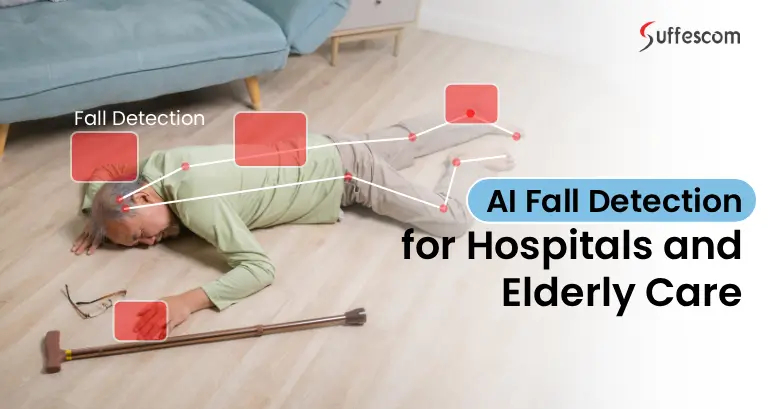
Falls continue to be among the most significant safety issues in hospital settings and old-age care. According to U.S. Centers for Disease Control and Prevention, over one in four individuals aged 65 or older fall yearly, yet fewer than half ever report it to a healthcare provider.
Even more concerning, a single fall makes it 50% more likely that the person will fall again. It creates a cycle of unnecessary injuries, hospital stays, and long-term care requirements.
For elder care providers, nursing homes, and hospitals, this chronic risk is a significant challenge. It affects their operational efficiency, staffing, and overall quality of care.
This is where fall detection and prevention systems with AI technology come into play. Through smart sensors, real-time monitoring, and predictive analytics, such solutions enable providers to identify movement anomalies, prevent repeated falls, and respond more rapidly when they occur.
In this blog, we will explore how fall prevention sensor systems are transforming elderly care and hospital environments. It makes them safer, smarter, and more proactive.
Understanding AI Fall Detection and Prevention
AI fall detection and prevention refers to the use of artificial intelligence technologies to automatically detect, analyze, and help prevent falls. It is specially built for elderly individuals. The system facilitates fall prevention and detection, which includes security surveillance systems, and sends an alert to the caregiver for a fast reaction.
These systems use a combination of smart sensors, computer vision, and machine learning algorithms to monitor movement patterns and identify fall risks in real time.
Difference Between AI Fall Prevention and Traditional Systems
As fall-related injuries are rising in elderly care settings, both hospitals and home care providers are increasingly turning to medical alerts with AI fall detection to improve response times and safety. The gap between traditional safety measures and modern AI-powered solutions is becoming increasingly evident. Here's how AI fall prevention systems differ from traditional methods:
| Feature | Traditional Systems | AI Fall Prevention Systems |
| Approach | Reactive | Predictive + Preventive |
| Monitoring | Manual / Basic Sensors | AI-driven, real-time |
| Accuracy | Low to Moderate | High, with fewer false positives |
| Response Time | Delayed (user-dependent) | Instant and automated |
| Analytics & Insights | None or minimal | Rich data and reporting |
| Integration Capabilities | Limited | Highly integrable with systems |
Key Features of Fall Prevention Sensor Systems
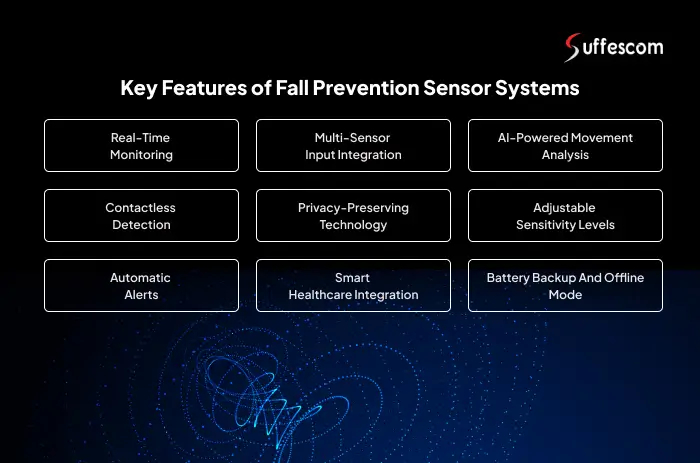
Modern elderly care and hospital safety systems are moving beyond basic alarms and reactive measures. AI-powered fall detection platforms provide predictive, intelligent solutions that seamlessly integrate into healthcare workflows. Here's a deeper look at their core components:
1. Real-Time Monitoring
It offers continuous 24/7 surveillance of patients or the elderly without manual oversight. Whether in a hospital ward or at home, an elderly fall detection system ensures rapid intervention when needed. AI algorithms process sensor data in milliseconds. It also ensures the immediate detection of slips, stumbles, or changes in body posture, allowing caregivers to act before injuries occur.
2. Multi-Sensor Input Integration
AI systems integrate data from various hardware components, including vision sensors, infrared motion detectors, and wearables. This integration ensures higher detection accuracy in high-traffic environments, such as hospital rooms.
3. AI-Powered Movement Analysis
AI models include learning human behaviour over time to detect micro-movements, slow collapses, or hesitation signals. It is not like traditional systems that rely on fixed triggers, such as pressing a button or tripping a wire.
4. Contactless Detection
Contactless detection employs radar, infrared, or vision-based sensors to detect falls without the necessity for wearables. It’s helpful in hospitals and elderly care centers where patients may not always wear their devices. It offers uninterrupted monitoring without compromising patient comfort.
5. Privacy-Preserving Technology
Privacy of data is essential in healthcare. Modern systems process data in real time using edge computing and anonymous analytics. This helps meet HIPAA and GDPR rules while still detecting falls instantly, without risking patient privacy.
6. Adjustable Sensitivity Levels
Not all patients share the same risk profile. Fall detection sensors offer adjustable sensitivity based on age, mobility, or care plans. This helps reduce false alarms and ensures the system fits each patient’s needs and care routine.
7. Automatic Alerts
The system instantly detects a possible fall and sends automated messages to nurses, caregivers, or emergency contacts. If there's no response, it escalates the alert to ensure faster action and reduce complications.
8. Smart Healthcare Integration
These solutions are created for effortless integration with hospital IT infrastructure. It easily taps into EHR platforms, nurse call systems, and care coordination tools. This eliminates data silos and makes way for more effective workflows across care teams.
9. Battery Backup and Offline Mode
Power outages or internet disruptions hinder patient safety. Thus, advanced fall prevention systems are crucial to use. It includes battery backup and offline functionality to monitor and store data locally, syncing with the cloud or dashboard once the connection is restored.
Why Implement AI Fall Detection in Elderly Care & Hospitals
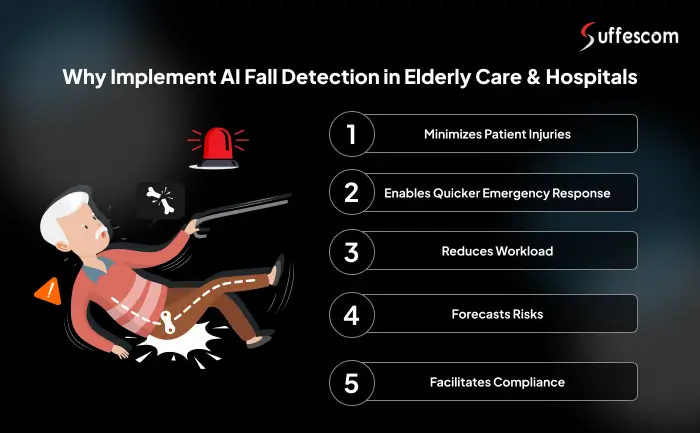
The medical industry is rapidly moving toward intelligent automation. Installing AI fall prevention and detection systems in hospitals and care homes has huge clinical as well as operational benefits:
Minimizes Patient Injuries
AI-based systems constantly monitor patients and detect falls in real-time. This instant fall detection minimizes the chance of delayed intervention, which is frequently the reason for secondary injuries, complications, or extended hospitalization.
Enables Quicker Emergency Response
The system sends autonomous alerts to caregivers, nurses, or emergency responders whenever a fall is identified. It is through mobile apps, nurse call systems, or internal dashboards. This reduces response time and ensures timely critical care.
Reduces Workload
AI fall detection systems use automated monitoring to reduce the extra work for already busy medical staff. Staff no longer need to constantly check on patients in person, which saves time and helps them feel less tired or frustrated.
Forecasts Risks
In addition to detection, AI solutions examine patterns of movement, gait abnormalities, and behavioral patterns to determine at-risk patients. Care staff can proactively modify care plans, apply safety protocols, or redistribute staff attention using real-time information.
Facilitates Compliance
AI fall detection systems assist organizations in meeting global patient safety objectives (IPSG), clinical risk reduction standards, and state health compliance laws (such as NABH, HIPAA, or NHS regulations). It safeguards patients, lowers liability, and enhances institutional reputation.
Tech Stack Used to Build AI-Powered Elderly Monitoring Systems
This robust tech stack enables the seamless deployment of AI Fall Detection Technology for Injury Prevention across hospitals and elderly care facilities.
- Frontend & Mobile: React.js, Flutter
- Backend: Node.js, Python (FastAPI)
- AI/ML: TensorFlow, PyTorch, OpenCV, YOLO
- IoT & Sensors: MQTT, ESP32, mmWave Radar, Accelerometers, Gyroscopes
- Integration: FHIR APIs, HL7, Nurse Call Systems
- Security & Compliance: SSL/TLS, AES-256 Encryption, 2FA, HIPAA
Build Smarter Elderly Care with AI Fall Prevention Solutions
Leverage predictive analytics to prevent falls before they happen. Our solutions easily fit into your existing healthcare systems.
What Technologies Drive AI Fall Detection and Prevention?
The tech behind AI fall detection for elderly care combines IoT sensors, computer vision, and predictive analytics.. It integrates multiple technologies to mitigate injury risks, particularly in high-dependency care environments. Here's how they work:
Computer Vision
Cameras in AI can track the body movement and posture of patients. It helps to identify sudden drops, slouching, or awkward positioning that indicate a fall. This works without needing patients to wear any devices.
ML Behaviour Modelling & Prediction
Machine learning models learn from past movements. Over time, it starts to analyze risky patterns such as unsteady walking or repeated near-falls. It allows staff to step in before an actual fall happens.
IoT Sensors & Wearables
Such systems often include smart mats, bed sensors, or wrist devices. These tools track real-time motion and impact. Edge computing ensures the data is processed instantly, without delays caused by cloud-only systems.
Integration with EHRs
These technologies don't operate in silos. They integrate with hospital systems, including electronic health records and nurse call platforms. Some setups also connect to existing CCTV networks, providing a single view of patient safety.
Top Medical Alert Systems with Fall Detection in 2025
Choosing the right system for fall detection is crucial. The best medical alert systems with fall detection offer far more than basic alarms. These systems combine wearable or ambient sensors that make them essential for hospitals, assisted living centres, and remote eldercare.
Here are some of the best medical alert systems with fall detection:
Medical Guardian
It is known for its reliable fall detection and GPS tracking, used in both independent and supervised eldercare environments. Their AI-enhanced wearable devices offer quick alert response and nationwide coverage.
Bay Alarm
It is a trusted name in home healthcare. Bay Alarm Medical offers customizable packages with automatic fall detection, 24/7 monitoring, and caregiver tracking through a dedicated mobile app.
Mobile Help
Mobile Help pairs fall detection with mobile health monitoring and EHR integration. It works well both at home and while travelling, making it ideal for patients in short-term or transitional care. It's a flexible choice for hospitals, rehab centres, and remote patient management programs.
Life Fone
Life Fone offers advanced fall detection combined with features like optional voice-in monitoring, caregiver support apps, and automated medication reminders. It offers customizable alert settings and a 24/7 emergency response service, making Life Fone a reliable choice for healthcare providers.
Aloe Care Health
It is very popular in eldercare facilities, including functionalities such as voice-activated fall alerts, air quality monitoring, and motion sensors. Caregivers get real-time updates through an app, making it a good choice for both home care and assisted living.
Use Cases of AI Fall Detection in Elderly Care & Hospitals
With AI in healthcare, fall detection and prevention are becoming faster and smarter. It is especially in settings where older people are most vulnerable. Today's fall prevention AI solutions go far beyond basic alarms. It offers real-time, predictive safety alerts across a range of care environments:
Monitoring High-Risk Elderly Patients
AI-powered systems track unstable or at-risk seniors around the clock. Sudden changes in posture or motion are detected quickly, triggering alerts. It allows care teams to respond more rapidly, reducing the risk of injury and promoting a safer recovery.
Smart Surveillance in Nursing Homes
Falls can be prevented using fall prevention AI solutions in facilities to observe many residents without having to constantly supervise them. The AI systems detect risky behaviors, eliminate false alarms, and enable caregivers to prioritize patients who most need attention.
Remote Elderly Care Based on Home Monitoring
Independent living is made possible without losing safety using AI-based fall detection. With wearables or contactless sensors, live monitoring keeps remote care teams and family members updated the moment something goes amiss.
Post-Surgery and Rehab Fall Prevention
Recovery phases are high-risk fall periods. AI technology analyzes gait, balance, and behavior to predict and prevent accidents, thereby reducing readmissions and improving post-discharge outcomes.
Transform Elderly Care with AI in Healthcare
Discover how our AI-powered fall detection systems can help your hospital or elderly care facility respond faster and reduce injuries.
Future Trends in Fall Prevention AI Systems
The demand for smarter elderly care grows, and fall prevention AI solutions are evolving rapidly. The focus is shifting from reactive alerts to proactive safety. Here are the points what is shaping the future:
Predictive Analytics
AI systems are becoming more proactive. By learning from past movement patterns, they can now predict high-risk behavior before a fall occurs. This helps care teams to take action earlier and personalize safety plans for every patient.
Audio-Based Fall Detection
The next wave of fall detection includes audio-powered AI. These tools can recognize distress sounds, crashes, or verbal cues. Some facilities are also exploring mobile robots equipped with fall sensors and sound transformers for enhanced accuracy in real-world environments.
Seamless IoT Integration
Future systems will increasingly rely on intelligence, utilizing everyday objects and spaces to collect health data. Smart beds, lighting, and environmental sensors will connect through IoT. It creates a network that continuously monitors safety without disrupting the patient's routine.
Final Words!
Falling is no longer an individual risk, it's an increasing problem for healthcare systems globally. That’s why AI fall detection for hospitals and care homes is becoming an essential investment. With more than one in four elderly patients suffering from a fall annually, the imperative for preventative, technology-based safety solutions has never been greater.
AI-powered fall detection offers a more innovative way to keep patients safe. These systems instantly react to accidents, monitor movement in real-time, and help predict risks before a fall occurs. The goal is to reduce injuries, support caregivers, and improve patient care.
As AI in healthcare improves, the use of innovative fall detection tools incorporates new technology. It’s about taking a real step toward safer, more proactive, and data-driven elderly care. Medical alerts with AI fall detection are a game-changer for both patient safety and caregiver efficiency.
People May Also Ask
1. How does AI fall detection function within hospitals?
In hospitals, AI fall detection systems utilize smart sensors, cameras, or wearables to track patient movement. Alerts are automatically triggered and sent to staff dashboards, nurse call systems, or mobile devices when unusual motion or a fall is sensed to enable quick response.
2. How does AI fall prevention differ from traditional systems?
Conventional systems are based on human monitoring or simple alarms. AI solutions provide predictive analytics, contactless identification, real-time notifications, and data insights, making them quicker, wiser, and more accurate in healthcare environments.
3. What are the advantages of fall prevention AI solutions in care homes?
They minimize patient injuries, accelerate emergency response, reduce caregiver burden, detect high-risk individuals, and enable healthcare staff to remain in compliance with safety directives.
4. Do AI fall detection systems maintain patient privacy?
Yes. The majority of new systems employ edge processing and anonymous data in order to maintain patient privacy. They are compliant with laws such as HIPAA and GDPR.
5. What parameters does an AI fall detection and prevention system look into patients?
Such a system analyzes unstable movements, such as patients feeling restless in bed or finding it difficult to get up from their bed. It also looks for the room exit time. The system checks body posture and orientation.

